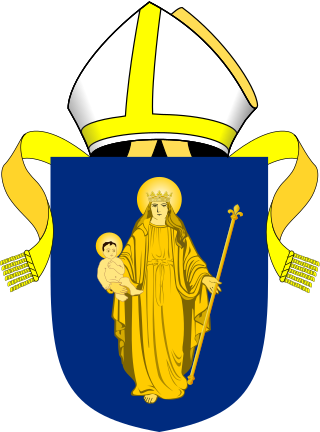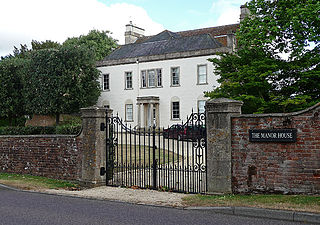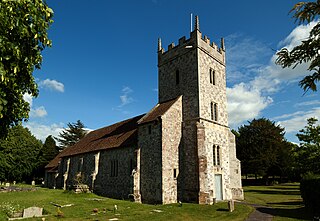Related Research Articles

The Whitechapel Bell Foundry was a business in the London Borough of Tower Hamlets. At the time of the closure of its Whitechapel premises, it was the oldest manufacturing company in Great Britain. The bell foundry primarily made church bells and their fittings and accessories, although it also provided single tolling bells, carillon bells and handbells. The foundry was notable for being the original manufacturer of the Liberty Bell, a famous symbol of American independence, and for re-casting Big Ben, which rings from the north clock tower at the Houses of Parliament in London.

John Taylor Bell Foundry (Loughborough) Limited, trading as John Taylor & Co and commonly known as Taylor's Bell Foundry, Taylor's of Loughborough, or simply Taylor's, is the world's largest working bell foundry. It is located in Loughborough, in the Charnwood borough of Leicestershire, England. The business originated in the 14th century, and the Taylor family took over in 1784.

Aldbourne is a village and civil parish about 6 miles (10 km) north-east of Marlborough, Wiltshire, England, in a valley on the south slope of the Lambourn Downs – part of the North Wessex Downs Area of Outstanding Natural Beauty. From here an unnamed winterbourne flows south to join the River Kennet 4 miles (6 km) away near Ramsbury. The 2011 Census recorded the parish population as 1,833. The parish includes the hamlets of Upper Upham and Woodsend and part of the hamlet of Preston, which straddles the boundary with Ramsbury. The village of Snap became deserted in the early 20th century.

Bishops Cannings is a village and civil parish in the Vale of Pewsey in Wiltshire, England, 3 miles (5 km) north-east of Devizes. The parish includes the village of Coate and the hamlets of Bourton, Horton and Little Horton.

Tollard Royal is a village and civil parish on Cranborne Chase, Wiltshire, England. The parish is on Wiltshire's southern boundary with Dorset and the village is 6 miles (10 km) southeast of the Dorset town of Shaftesbury, on the B3081 road between Shaftesbury and Sixpenny Handley.

The Bishop of Salisbury is the ordinary of the Church of England's Diocese of Salisbury in the Province of Canterbury. The diocese covers much of the counties of Wiltshire and Dorset. The see is in the City of Salisbury where the bishop's seat is in the Cathedral Church of the Blessed Virgin Mary. The current bishop is Stephen Lake.

Walter de la Wyle was Bishop of Salisbury from 1263 to 1271, and the founder of St. Edmund's College, Salisbury.

Potterne is a village and civil parish in the county of Wiltshire, England. The village is 2 miles (3.2 km) south of Devizes and lies on the A360 which links Devizes to Salisbury. The civil parish includes the hamlet of Potterne Wick.

Upavon is a rural village and civil parish in the county of Wiltshire, England. As its name suggests, it is on the upper portion of the River Avon which runs from north to south through the village. It is on the north edge of Salisbury Plain about 4 miles (6.4 km) south of Pewsey, 10 miles (16 km) southeast of the market town of Devizes, and 20 miles (32 km) north of the cathedral city of Salisbury. The A345 and A342 roads run through the village.

Britford is a village and civil parish beside the River Avon about 1.5 miles (2.4 km) south-east of Salisbury in Wiltshire, England. The village is just off the A338 Salisbury-Bournemouth road. The 2011 Census recorded a parish population of 592.

Seend is a village and civil parish about 3 miles (5 km) southeast of the market town of Melksham, Wiltshire, England. It lies about 3.5 miles (6 km) west of Devizes and 5.5 miles (9 km) northeast of the county town of Trowbridge. The parish includes the sub-village of Seend Cleeve and the hamlets of Inmarsh, Martinslade, Seend Head, Sells Green and The Stocks.
John Dove (−1664/65) was a parliamentary politician during the English Civil War and Interregnum. He has sometimes been numbered amongst the regicides; however, although he sat as a Commissioner in the trial of Charles I at the Painted Chamber of the Palace of Westminster on the 12th, 13th, 19th, and 26 January, Dove took no other part in the trial of Charles, did not sign the death warrant, and he was not punished at the Restoration.
Rudhall of Gloucester was a family business of bell founders in the city of Gloucester, England, who between 1684 and 1835 cast more than 5,000 bells.

Richard Phelps (c.1670–1738) was born in Avebury, Wiltshire, England. Phelps was a bellfounder, or a maker of bells, primarily for churches. He was master of the Whitechapel Bell Foundry in London from 1701 to 1738, and is best known for his large bell, Great Tom, in the steeple of St Paul's Cathedral in London, England. The foundry, in operation since at least 1570, was listed by the Guinness Book of Records as the oldest manufacturing company in Great Britain.

St Lawrence's Church at Stratford-sub-Castle is a 13th-century Grade I listed Church of England parish church, to the north of Salisbury, Wiltshire, England. It stands close to the abandoned settlement of Old Sarum and the River Avon, and is about 2 miles (3.2 km) north of Salisbury Cathedral.

South Newton is a village and civil parish about 4 miles (6.4 km) north-west of Salisbury in Wiltshire, England. Topologically it lies between chalk downs to the north-east, and downland with Grovely Wood to the south-west. The village straddles the A36 road and is on the left bank of the River Wylye, which defines much of the western boundary of the parish; the eastern boundary follows the A360 Salisbury-Devizes road.

St Andrew's Church is in the village of Wanborough in north Wiltshire, England. It is an active Anglican parish church in the Diocese of Bristol, one of only three churches in England to have both a western tower and a central spire. It has been designated a Grade I listed building.
Christopher Hodson was an English bellfounder from London, who was active between 1669 and 1696.

The Church of All Saints is the Church of England parish church for the village of Netheravon, Wiltshire, England. A church has stood on this site near the River Avon since Saxon times. It has been designated a Grade I listed building.

The Church of St Laurence is the main Church of England parish church for the village of Downton, Wiltshire, England. An unusually long building for a village church, the present structure dates from 1147. Continually altered and enlarged until the mid-19th century, the church displays every style of architecture from the Norman to Victorian eras, and has been designated a Grade I listed building.
References
- 1 2 3 Lukis 1859, p. 142.
- 1 2 3 Lukis 1859, p. 143.
- ↑ Pugh, R.B.; Crittall, Elizabeth, eds. (1956). "The cathedral of Salisbury: Eighteenth to twentieth centuries". A History of the County of Wiltshire, Volume 3. Victoria County History. University of London. pp. 197–210. Retrieved 23 August 2022– via British History Online.
- ↑ "Dove's Guide: Salisbury Cathedral" . Retrieved 21 August 2022.
- ↑ "Dove's Guide: St Nicholas, Sandford Orcas" . Retrieved 20 August 2022.
- 1 2 Lukis 1859, p. 144.
- 1 2 Crittall, Elizabeth, ed. (1962). "Salisbury: St Martin's parish". A History of the County of Wiltshire, Volume 6. Victoria County History. University of London. pp. 79–81. Retrieved 23 August 2022– via British History Online.
- ↑ Lukis 1859, p. 133.
- ↑ "Wiltshire Council: Salisbury Car Parks" . Retrieved 20 August 2022.
- 1 2 Crittall, Elizabeth, ed. (1959). "Other industries". A History of the County of Wiltshire, Volume 4. Victoria County History. University of London. pp. 220–253. Retrieved 28 August 2022– via British History Online.
- ↑ Lukis 1859, p. 145.
- 1 2 "Trebles Going: Richard Florey" . Retrieved 21 August 2022.
- ↑ "Dove's Guide: Purdue" . Retrieved 22 August 2022.
- ↑ "Dove's Guide: John Wallis" . Retrieved 22 August 2022.
- ↑ Lukis 1859, pp. 141–150.
- 1 2 Lukis 1859, p. 147.
- ↑ "St Canice's Cathedral: The Cathedral Bells" . Retrieved 20 August 2022.
- Lukis, W. C. (1859). "History of Salisbury Bell-Foundry". Journal of the British Archaeological Association . 15: 141–150 – via Internet Archive.